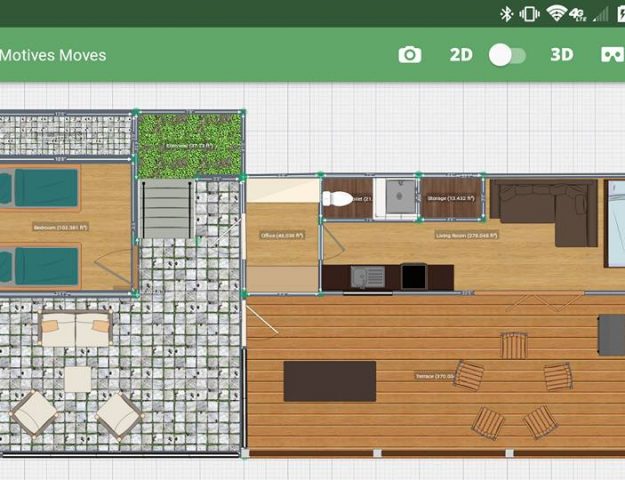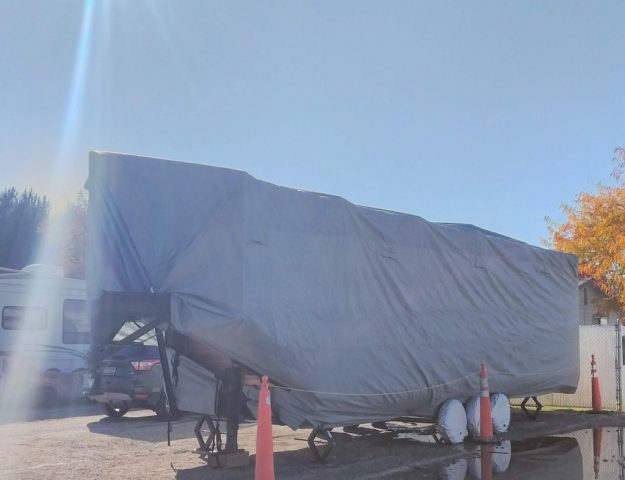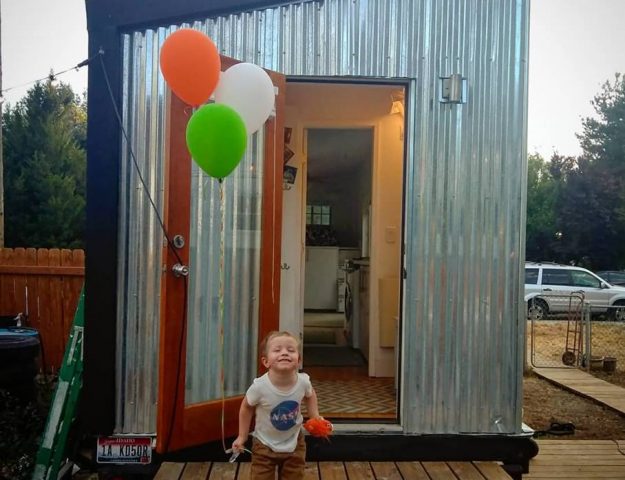Why Cost Per Square Foot Is A Bad Metric For Tiny Houses

Cost per square foot (s.f.) is a metric used by developers to sell more and to sell bigger. As the size goes up cost per s.f. goes down. In that way a huge house (with a huge price tag) may actually look like a better deal than a smaller place. We seem to label that s.f. cost as the most important metric when shopping for a home. I’d like to break down why it isn’t.
I am going to give hypotheticals here:
Houses have an overall cost per s.f. If you break it down further each room does, too. I’m going to remove land costs from both hypotheticals because that can throw the whole thing off (in a ground bound house its included in cost, in a wheeled house it’s generally considered ‘rent’). Let’s just start here. Kitchens and baths have a lot to them: millwork, fixtures, plumbing, etc. They tend to be more costly than bare walls such as a living room. Let’s ‘hypothetically’ say:
- Kitchen Costs – $250/s.f.
- Bathroom Costs – $150/s.f.
- Living Room Costs – $80/s.f.
- Bedroom Costs – $80/s.f.
- Hallway – $50/s.f.
Again, in both of these cases I will not include land costs.
In a small (~1,000 s.f.) three bedroom, two bathroom house you have about 10’x10′ kitchen (100 s.f. x $250= $25,000), two 5’x10′ bathrooms (100 s.f. x $150= $15,000), two ‘living rooms’ @15’x15′ (450 s.f. x $80=$36,000) and three 10’x10′ bedrooms (300 s.f. x $80= $24,000). Maybe you have a hallway connecting rooms, say about 50′ of hall (50′ x $50= $2,500). Total cost of your 3 bedroom, two bath simple 1,000 s.f. house is sitting around $102,500.
In this case the standard house comes in right about $102.50/s.f. to build
For the next part of my argument (below) lets say you find a steal of a deal and get a piece of property to build on for $57,500 bringing your total, with land to $160,000.
Now lets look at a tiny house.
Most tiny houses are pretty close to half kitchen/bath half living/bed (say in the case of a loft style). So, same square foot costs applied to a 200 s.f. tiny house let’s say… 100 s.f. living area (100 s.f. x $80= $8,000), the bedroom actually occupies the same area. Then you have 60 s.f. for the kitchen, because the kitchens in tiny houses are usually a tad larger than the bathrooms (60 s.f. x $250 = $15,000) and 40 s.f. for a bathroom (40 s.f. x $150 = $6,000).
In theory the trailer would be included in all that cost just like the foundation would be included in the cost of the standard house. That brings out tiny house cost to $33,000.
So the tiny house comes out to $165/s.f. using the exact same metrics.
Reality
That is saying apples to apples comparison of costs of rooms. In reality tiny house folks generally up their finishes a little since it’s such a small amount of material needed. I think it would be more realistic to say tiny house kitchen finishes put that room into a higher range, maybe $300-350/s.f., similar in the bathrooms. Because you are using space for multi purposes you’re able to decrease the cost overall in some areas.
A couple other points, often appliances in tiny homes are less common and therefore can be more costly than standard fixtures bringing that base cost up even more per s.f. Additionally, in standard housing, when you add space to the house it is rarely in the form of extra ‘expensive rooms’. It’s more likely in the form of bigger living areas, more bedrooms, etc. Adding more space in that way will actually decrease the overall square foot cost while potentially adding significant cost to the home (especially utility costs).
This is why it is hard to make tiny houses ‘pencil out’ on a sheet of paper compared, apples to apples, next to more standard housing. Many people get into tiny houses because of financial reasons only to find out ‘financially they don’t make sense’. Only they do. It’s just a different way to do the math… In this example a tiny house is still performing the exact same functions at 1/3 the initial cost. $33,000 is far easier to come up with and pay back than $100,000.
Other Considerations
Interest
If you add interests rates with financing that puts the standard house even higher over a mortgage term. A the time of this writing, tiny houses can only be financed for 5-10 years, if at all, that greatly minimizes the cost you will pay in interest.
In standard housing, a mortgage rate of 3.4% over 30 year wraps in just over $95,000 of interest into our example standard house, bringing the real cost to $255,000.
The payment for this standard model is about $710.00 a month for the next 30 years.
Now, looking at a worst case scenario with tiny houses, a 10 year RV loan at a higher interest rate of 4.8%. Over the ten years you would pay $8,600 in interest payments bringing the total cost to $41,600.
The payment for this tiny house is about $347.00 a month for the next 10 years.
Of course this also doesn’t include land costs but it doesn’t need to either. I mean, the land costs are an expense you can put off until you have saved instead of needing to finance. You will likely have to rent property to park on (depending where you are these rates may be $200-$1,200. Most often it is somewhere in the $300-$400 range). And after 10 years, you own it outright and can start saving for land if that’s wanted (Note: in my experience most tiny house people pay it off MUCH sooner, if they finance at all. Note #2: A lot of people who are interested in tiny homes don’t necessarily want the commitment buying land right off the batt or at all. Some are just starting out in life, some want the flexibility to travel with work, or family.
Even thought the square footage cost is more for the tiny house the monthly payment is cut in half and the amount of time you’ll spend paying it is one third as long. It’s providing exactly the same service as the bigger standard house… In my eyes, that’s pretty hard to argue with.
Utilities
I have paid over $400 for standard housing utilities (water/sewer/gas/electric). I regularly hear this is very cheap these days. You’ll have to forgive my ignorance, after 8 years of living tiny I find more than $50 a month very expensive. I have a hard time grappling justifying the waste in utilities every month on oversized houses. We’d all be served better by picking something more ‘right sized’ for us.
Transportation
Not of the house, of our day to day lives. Integration into cities is crucial for the success of tiny homes. Luckily, I think its helpful to everyone. Standard home owners can ease their debts by renting portions of their property to tiny home owners (LA made this so). Whether this happens above or under the radar doesn’t seem to matter. It’s happening because it’s needed on both sides of the homeowner lines.
The reason this is important is because most jobs are located in cities. People who work at those jobs need access to affordable housing. If the only way they can afford a house is by moving out to a suburb, or further, that is basically going to be added to their housing cost (and global emission costs…). If you are lucky enough to find work within 20 miles of your house I’d say you’re blessed. Still, say you get 20 mpg in your car. It takes a gallon of gas to get to work and a gallon of gas to get back. At $3/gallon that’s $6/day. For one person this is $138 a month. If you have two people working, that’s almost $300/month. Just to work a job to pay your mortgage.
Affordable housing has to consider the whole life impacts. This has very little to do with the cost per square foot to build the house.



